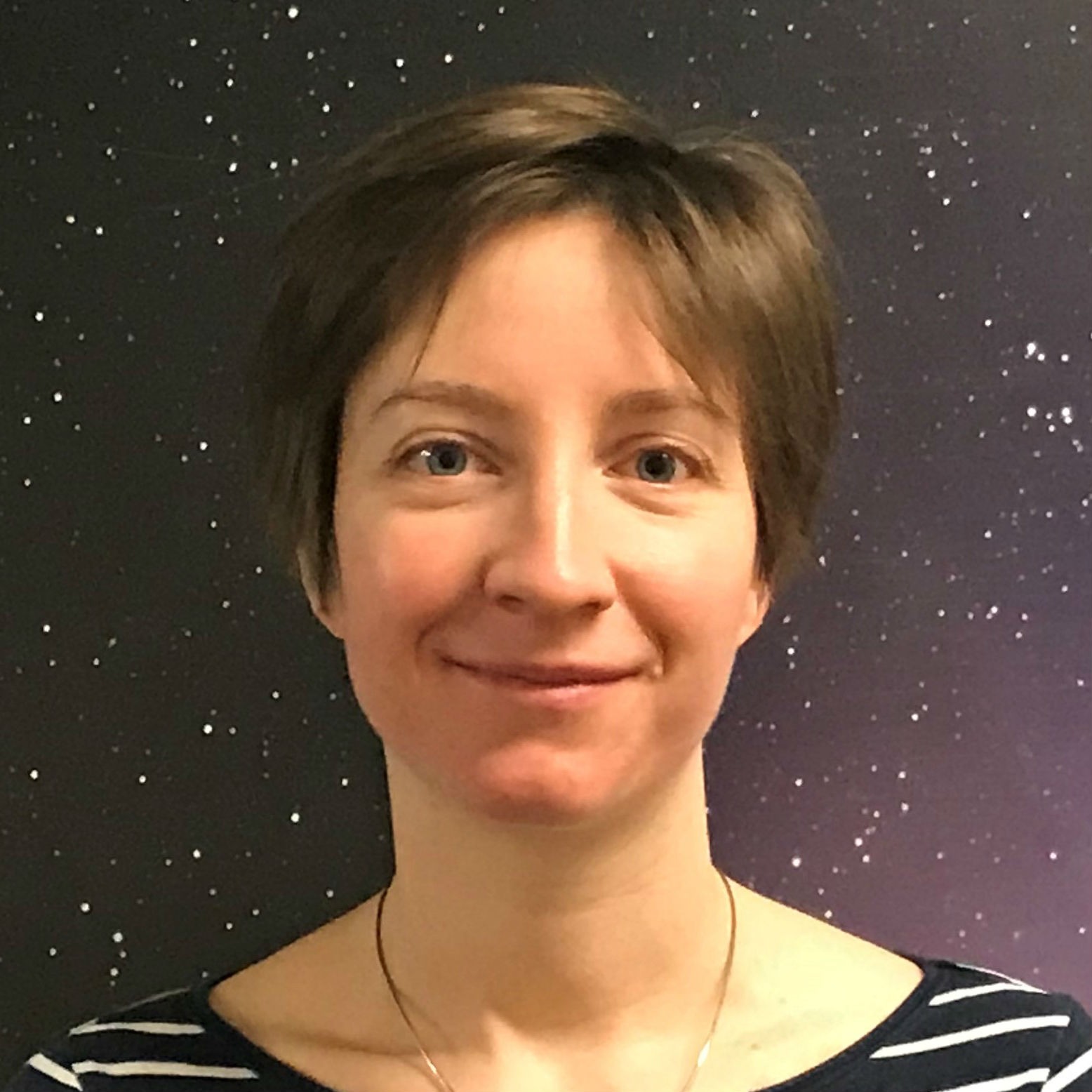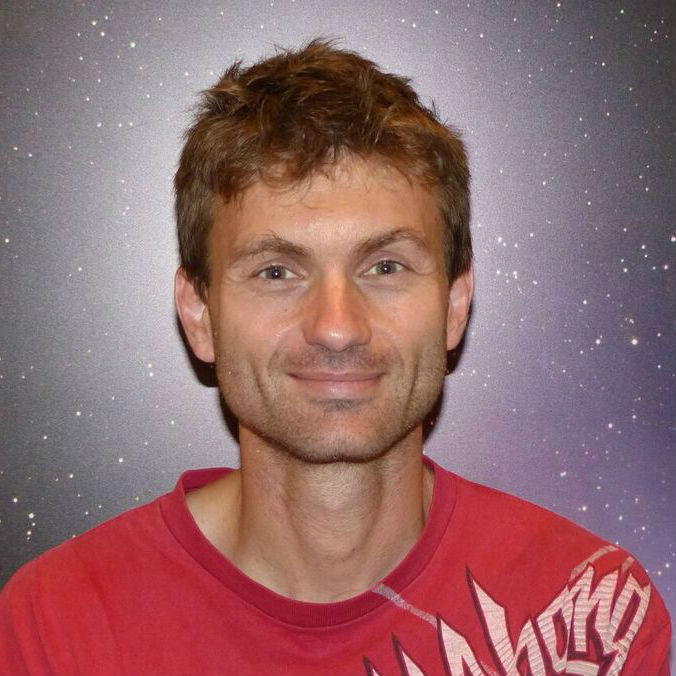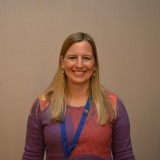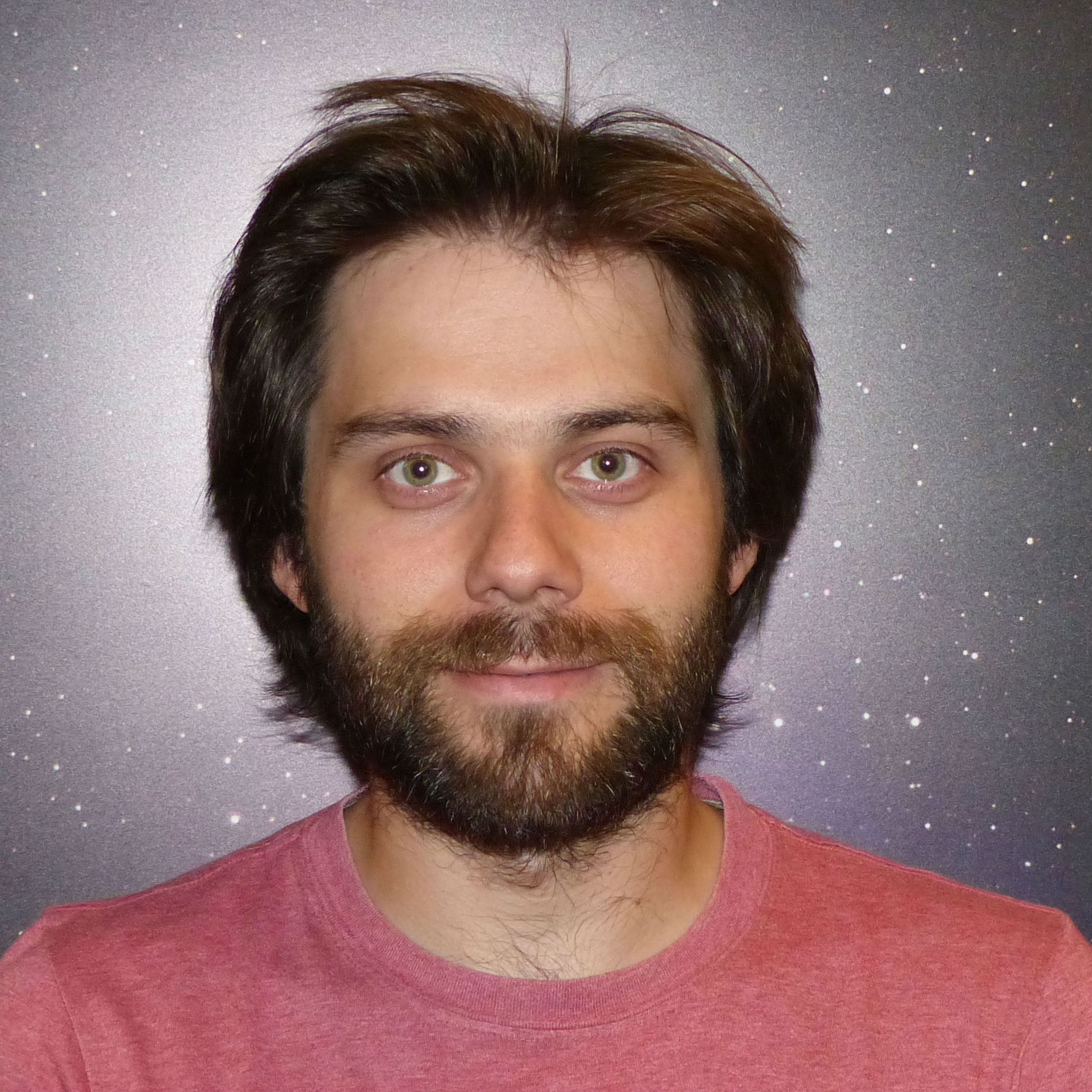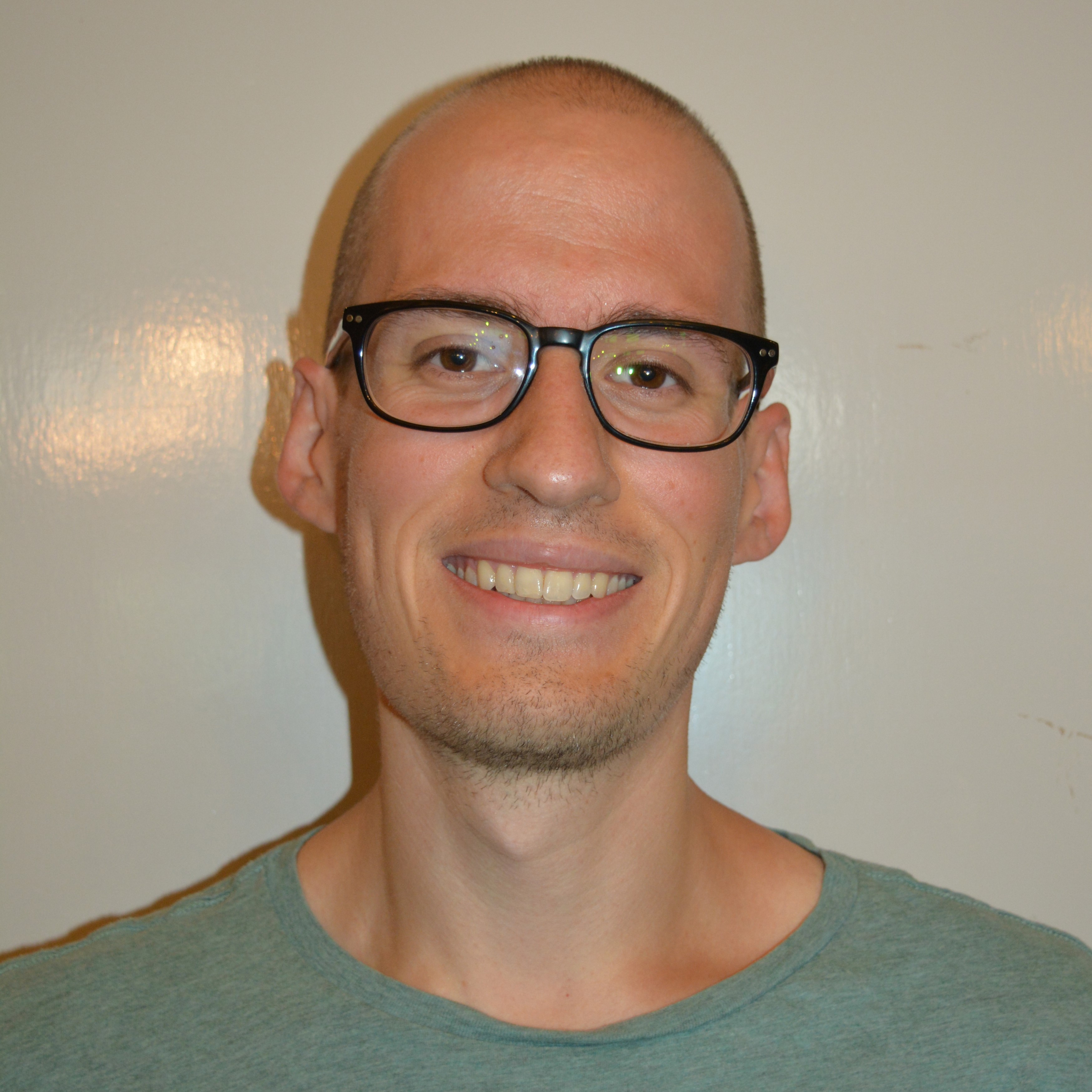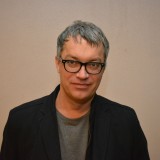Domain 2: Planetary system architectures, their formation, and evolution
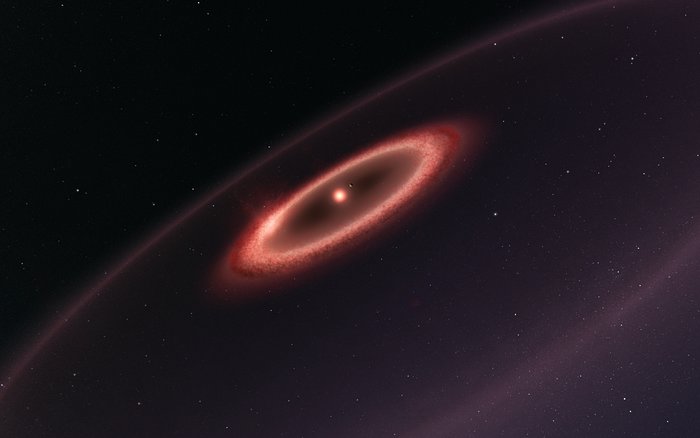
Credit: ESO/M. Kornmesser
Recent years have seen tremendous progress in the analysis of the architecture of extrasolar planetary systems and of their formation and evolution history. On the observational side, for example, the first results based on the complete 48-month dataset from Kepler were published (Coughlin et al. 2016), radial velocity surveys continued to constrain the existence of planets with small masses (e.g., Diaz et al. 2016a,b) and ever-longer orbital periods (e.g., Wittenmyer et al. 2016), and large-scale direct imaging surveys probed deeper than before for the existence of distant giant planets (e.g., Bowler 2016 and references therein). Equally important were studies that combined the results from different observing techniques resulting in, for instance, new constraints on the occurrence rate of long period planets (e.g., Bryan et al. 2016; combining RV and direct imaging) or statistical constraints on the composition of planets with radii below four Earth radii (e.g., Dressing et al. 2015a,b, Rogers 2015, Motalebi et al. 2015, Dorn et al. 2015; Wolfgang et al. 2016; combining RV and transit data). Furthermore, complex simulations linked planet formation scenarios with time dependent disc models to predict observable properties of (gas giant) planets such as mass, (atmospheric) composition or separation (e.g., Benz et al. 2014; Bitsch, Lambrechts & Johansen 2015; Thiabaud et al. 2015; Cridland et al. 2016). The detection of young gas giant planet candidates still embedded within their circumstellar discs (e.g., Sallum et al. 2015; Reggiani et al. 2014, 2017) may provide a crucial link between observations and theory in this case. For terrestrial planets, sophisticated N-body simulations enabled new insights in the formation of hot super-Earths and yielded new ideas concerning the radial mixing of material and the delivery of water (e.g., Raymond et al. 2014, Hoffmann et al. 2016). Other simulations focused on understanding planet-planet or planetplanetesimal disc interactions to understand the long-term evolution of planetary systems (e.g., Davies et al. 2014). Recent missions, particularly ESA’s Rosetta spacecraft to comet 67P/Churyumov-Gerasimenko, have contributed tremendously to a better understanding of solar system processes, comets, and their possible importance for volatile delivery to the inner planets, including Earth (e.g., Peslier et al. 2017, and references therein). Furthermore, new models link theories of planetary accretion with observations in meteorites (e.g., Johansen et al. 2015) and detailed analyses of meteorite matrix and chondrules suggest “complementarity” (Palme et al. 2015, see also projects in Domain 1), implying that chondrule formation is governed locally, possibly resulting in distinct matrix-chondrule pairing in each asteroid forming region.
In phase II of PlanetS, we can expect equally fast and wide-reaching progress in this research field, partially driven by new missions and instruments that will come online, such as CHEOPS, TESS, SAINT-EX, VLT/ESPRESSO, VLT/ERIS, 3.6m/NIRPS. In parallel, GAIA will release more complete and precise catalogues to complement the large-scale exoplanet imaging surveys currently being conducted by VLT/SPHERE, VLT/NACO-ISPY and Gemini/GPI. Samples returned from primitive C-rich asteroids and analysed in the laboratory will improve our understanding of the formation of our Solar System. JAXA scheduled Hayabusa II’s return for 2020 and participation in sample analysis is being pursued. Theory progresses much faster when supplemented by observational/experimental data with no, or well-understood, biases. Collaborations between theorists and observers will allow us to advance our knowledge of planets as a class of diverse astronomical objects. Consequently, this research field clearly warrants a dedicated domain within the NCCR.
The research in Domain 2 will combine studies focusing on ensembles of objects or on the overall demographics of systems with studies focusing on individual spotlight or ‘Rosetta-stone’ systems. These projects will be made possible through the participation of PlanetS in several instrument/mission consortia (e.g., SAINT-EX, NIRPS, CHEOPS). We will take advantage of the diversity of expertise to combine observations, theory, and simulations to make progress in our understanding of planet formation and evolution. Laboratory measurements of solar system materials will be used as a benchmark and reference case for comparisons. In this context, we take ‘system architectures’ to encompass all physical (and partially chemical) characteristics of planetary systems, including the distribution of mass and materials as well as the composition and internal structure of major bodies.
Project 2.1: Understanding planetary system architecture Project leader: Stéphane Udry (UGE)
The project builds on the legacy of Project 7 in phase I. Planet orbital and physical properties determined via the combination of data from various sources (instruments or nature) are better defined and more robust than parameters obtained from single approaches. Results will then be of great importance in comparing statistical predictions of theoretical models with observations. In this context, for phase II, we will focus on multi-planet system properties, developing further the data analysis approach, the analytical modelling of the associated dynamical evolution, and taking advantage of the Gaia data becoming available.
More information
More information is available on our dedicated website.
Team
Associate
Associate
Associate
Associate
Project 2.2: Density of exoplanets Project leader François Bouchy (UGE)
The aim of the project is to fill the mass-radius diagram in the low-mass exoplanet regime, to constrain their internal structure and composition, and to provide “golden” targets for atmospheric characterisation. To date only a few dozen low-mass exoplanets (Neptune-like and super-Earths) have masses and radii sufficiently accurately measured to constrain their composition and internal structure. The transition in mass or radius between purely rocky planets and planets with massive volatile envelopes is not well established. The main objective is to find transiting planets that orbit nearby stars with a special focus on small stars, namely K and M dwarfs. This will be achieved with the high precision photometric survey NGTS, in operation at Paranal, and the TESS space mission, which will be launched in 2018. Both experiments will discover small-sized exoplanets and will permit us to derive planetary radii, which will be complementary to future CHEOPS observations. Both NGST and TESS aim to monitor bright K and M dwarf stars over the whole sky and will require ground-based radial-velocity follow-up to measure exoplanet masses. NIRPS (Near-InfraRed (IR) Planet Search) is an indevelopment near-IR echelle spectrograph led by UGE and Montréal University. NIRPS will be installed on the 3.6-m ESO telescope at La Silla in 2019 and will be used simultaneously with the well-known planet hunter HARPS. Both instruments will play a crucial role in the NGTS, TESS, and CHEOPS follow-up and will permit us to derive exoplanet masses down to one Earth mass. They will also allow us to characterise properties and chemical abundances of host stars to constrain the metallic core size and mantle composition of exoplanets.
More information
More information is available on our dedicated website.
Team
Project 2.3: Direct imaging of planetary systems Project leader: Sascha Quanz (ETHZ)
The project aims at directly detecting and characterising gas giant exoplanets by means of high-contrast imaging. More specifically, as detailed below, there will be two distinct work packages targeting different types of host stars to directly detect (1) young gas giant planets around binary systems or B-type stars, and (2) gas giant planets orbiting the nearest stars in the solar vicinity. The first work package will provide empirical data to address key questions related to planet occurrence rates in different environments. The second work package will contribute to the compilation of a systematic overview of the exoplanet census in the immediate solar neighbourhood and is a continuation of a dedicated NCCR initiative that was started in phase I (“the solar neighbourhood exoplanet census”, PIs: Dr. Sascha Quanz, Dr. Christophe Lovis). The required observations for the project will largely be carried out with VLT/SPHERE and VLT/NACO and, after 2020, with VLT/ERIS.
More information
More information is available on our dedicated website.
Team
Associate
Project 2.4: Planet evolution: connection to stellar properties, chemical/physical processes, and formation mechanism Project leader: Ravit Helled (UZH)
The objectives of this project are to characterise exoplanets, link the planetary composition to the stellar properties, thereby linking observations with interpretation, investigate the change in the planetary structure (and composition) due to physical and chemical processes, and to explore giant planet formation in the disc instability (DI) scenario. The goal of work package 1 is to determine the chemical evolution of planets that are volatile-rich. Work package 2 aims to infer internal structure models for planets with measured masses and radii and to put limits on their plausible compositions and internal structure. Finally, the goal of work package 3 (WP3) is to explore the possible internal structures and evolution histories of DI giant protoplanets.
More information
More information is available on our dedicated website.
Team
Project 2.5: Formation and composition of core-dominated planets Project leader: Yann Alibert (UBE)
Project 2.5 is structured around two different axes. The first axis consists in the study of planet formation in different environments , with a focus on gas-poor planets and their volatile content. These planets are indeed the only ones that can potentially be habitable, so the study of their formation and composition is of fundamental importance. The second axis is to develop advanced statistical techniques, inspired by machine learning and big data science , in order to process the vast amount of data coming from both simulations and present-day and future observations.
More information
More information is available on our dedicated website.
Team
Associate
Associate
Project 2.6: Collisional growth and orbital evolution of planets: HPC simulations Project leader: Joachim Stadel (UZH)
Our goal is to simulate the growth of planets from realistic initial distributions of planetesimals, including a live dissipating protoplanetary gas disc. This requires improving the initial conditions in WP1, the N-body code GENGA in WP2, and finally the hydrodynamical treatment of the gas disc and collision outcomes in WP3. High performance computing (HPC) methods are critical to pushing the forefront of what is possible with such direct simulations.
More information
More information is available on our dedicated website.
Team
Project 2.7: Monitoring solar system formation and evolution with noble gases Project leader: Henner Busemann (ETHZ)
The project aims at an improved understanding of the conditions and processes that shaped our Solar System – the only planetary system of which samples can be studied in the lab. We will examine the distribution and evolution of the volatile reservoirs including atmospheres and interiors of the celestial bodies. To this aim, we plan to apply laboratory-based state-of-the-art analyses of the noble gas distributions in various primitive extra-terrestrial materials. Timing, mechanisms of distribution, transport, incorporation, and evolution of the volatile elements will be examined in four work packages. This project (one four-year postdoc) will be complemented by independent research carried out at ETHZ, funded by other sources.
More information
More information is available on our dedicated website.
Team
Associate
Associate
Project 2.8: Signal correction to reveal other Earths Project leader: X. Dumusque, UGE
Description will follow
More information
More information is available on our dedicated website.
Team

